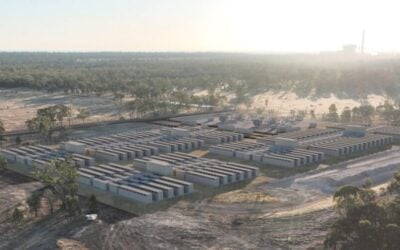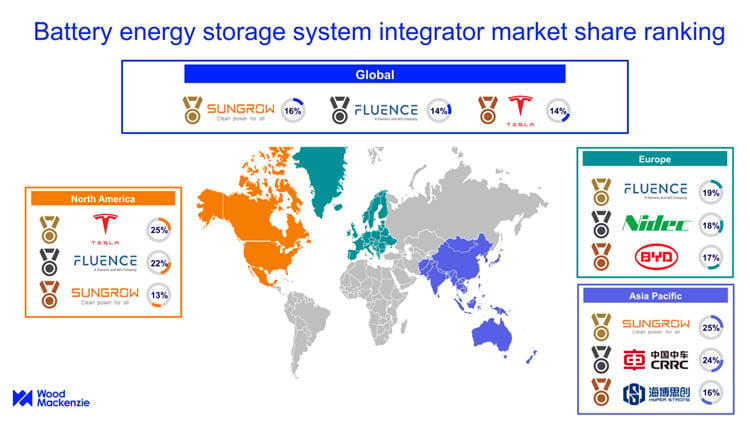Report on Political Risk Impacting Renewable Energy Development and Sustainable Development Goals in the United States
Executive Summary: Legislative and Regulatory Setbacks to Sustainable Development
Recent legislative actions and executive orders in the United States have introduced significant political risks for the renewable energy sector, directly threatening the nation’s progress towards key Sustainable Development Goals (SDGs). The repeal of clean energy tax credits and the abrupt halting of major projects undermine advancements in SDG 7 (Affordable and Clean Energy) and SDG 13 (Climate Action). These developments also create substantial economic and infrastructural challenges, impacting SDG 8 (Decent Work and Economic Growth) and SDG 9 (Industry, Innovation, and Infrastructure). This report analyzes these political risks and outlines mitigation strategies, such as Political Risk Insurance (PRI) and revised contractual clauses, to safeguard investments aligned with the global sustainability agenda.
Legislative Changes and Direct Impacts on SDG 7 and SDG 13
The passage of the “One Big Beautiful Bill Act” (OBBBA) has reversed critical financial incentives established by the 2022 Inflation Reduction Act, which were designed to accelerate the transition to renewable energy. This legislative shift poses a direct threat to achieving SDG 7, which aims to increase the share of renewable energy in the global energy mix, and SDG 13, which calls for urgent action to combat climate change.
- Repeal of Production Credits: The OBBBA repeals the Clean Electricity Production Credit (Section 70512) and the Clean Electricity Investment Credit (Section 70513) for new projects, directly disincentivizing investment in clean energy generation.
- Termination of Green Tax Credits: Several other credits crucial for promoting energy efficiency and clean technology adoption are set to terminate after 2025, including:
- Energy Efficient Home Improvement Credit (Section 70505)
- Clean Vehicle Credit (Section 70502)
- New Energy Efficient Home Credit (Section 70508)
- Undermining Climate Action: By removing these incentives, the legislation curtails the primary mechanisms for reducing national carbon emissions, thereby impeding progress on the targets set forth in SDG 13.
Project Disruptions and Consequences for SDG 8 and SDG 9
Recent executive actions have resulted in the suspension and cancellation of major renewable energy infrastructure projects, leading to significant economic losses and setbacks for sustainable infrastructure development, directly affecting SDG 8 and SDG 9.
Case Studies:
- Empire Wind 1: This major offshore wind project, designed to power 500,000 homes and contribute to SDG 11 (Sustainable Cities and Communities), was temporarily halted by a stop-work order from the Bureau of Ocean Energy Management. While later reversed, the suspension caused substantial financial costs from supply chain disruptions and stranded assets, highlighting the vulnerability of large-scale projects essential for SDG 9 (Industry, Innovation, and Infrastructure).
- Atlantic Shores Offshore Wind: This 1.5-GW project off New Jersey was forced to petition for termination after regulatory and executive actions rendered it non-viable. The withdrawal represents a significant loss of potential clean energy, investment, and jobs, directly contradicting the objectives of SDG 8 (Decent Work and Economic Growth).
Risk Mitigation Strategies to Protect SDG-Aligned Investments
In a volatile political climate, developers must employ robust risk management strategies to protect investments that contribute to the SDGs. Two key mechanisms are critical for mitigating political and regulatory risks.
- Political Risk Insurance (PRI): PRI is a specialized insurance product that can protect against financial losses resulting from adverse government actions.
- It can cover events such as the abrupt repeal of incentives or “contract frustration due to political events.”
- While often used in developing nations, PRI is increasingly relevant for projects in developed markets, including North America, to de-risk investments in sustainable infrastructure (SDG 9).
- International bodies like the World Bank Group utilize PRI to support energy programs and encourage private investment in renewable projects.
- Enhanced Force Majeure Clauses: Contractual resilience can be strengthened by revising force majeure clauses to explicitly include “political risks.”
- Given the narrow interpretation of such clauses in jurisdictions like New York, specific language is necessary.
- Including terms like “changes in government policy,” “regulatory shifts,” or “governmental actions” can provide a legal basis for suspending or terminating obligations when political events make performance commercially unviable.
The Critical Role of Partnerships and Negotiation for SDG 17
Navigating regulatory roadblocks requires persistent communication and negotiation, underscoring the importance of SDG 17 (Partnerships for the Goals). The temporary resolution of the Empire Wind 1 project demonstrates that engagement with government agencies can yield positive outcomes. Developers must maintain open channels with all levels of government to advocate for project continuity. For projects like Atlantic Shores, which is seeking a “reset period,” ongoing negotiation and partnership between public and private stakeholders are essential to finding a viable path forward that aligns with national and global sustainability objectives.
SDGs Addressed in the Article
SDG 7: Affordable and Clean Energy
- The article’s central theme is the development of renewable energy in the United States, specifically solar and wind power. It directly addresses the goal of increasing access to clean energy by detailing the “significant strides in renewable energy development,” such as the addition of “more than 121 GW of utility and small-scale solar capacity” and “83 GW of wind capacity” over the last decade. The challenges discussed, including the repeal of clean energy tax credits and the pausing of projects like Empire Wind 1, directly impact the affordability and accessibility of clean energy.
SDG 13: Climate Action
- The development of renewable energy is a primary strategy for combating climate change. The article discusses national policies aimed at this goal, such as the “Inflation Reduction Act,” which enacted “major clean energy tax credits.” The subsequent repeal of these credits by the “One Big Beautiful Bill Act (OBBBA)” and the executive order “pausing the development of offshore wind projects” represent significant setbacks for national climate action plans, linking the article’s content directly to this SDG.
SDG 9: Industry, Innovation, and Infrastructure
- The article focuses on the development of large-scale, sustainable infrastructure projects, including the “Empire Wind 1” offshore wind project and the “Atlantic Shores Offshore Wind” project. These projects represent innovation and the upgrading of energy infrastructure. The discussion of political risks, regulatory interruptions, and disrupted supply chains highlights the challenges in building resilient infrastructure, a key component of SDG 9.
SDG 17: Partnerships for the Goals
- The article illustrates the importance of partnerships to achieve energy goals. It mentions the World Bank Group’s “$150 million energy program for Sri Lanka,” which involves the International Finance Corporation (IFC) and Multilateral Investment Guarantee Agency (MIGA) providing “direct investments and political risk insurance” to support private investors. This is a clear example of a public-private partnership aimed at de-risking and promoting investment in sustainable development. The article also notes that developers must keep “communication channels open at all levels of government,” highlighting the need for collaboration.
SDG 16: Peace, Justice and Strong Institutions
- The article underscores how the stability and predictability of institutions affect development. The “abruptly pause [of] projects already approved,” the “unexpected stop-work order” for Empire Wind 1, and the repeal of tax credits demonstrate how volatile political actions and a lack of stable governance can undermine long-term investments and create significant financial risk. The discussion of legal tools like Political Risk Insurance (PRI) and force majeure clauses points to the need for strong legal and institutional frameworks to manage such risks.
Relevant SDG Targets
SDG 7: Affordable and Clean Energy
- Target 7.2: By 2030, increase substantially the share of renewable energy in the global energy mix. The article directly relates to this target by quantifying the growth in renewable energy in the U.S. (“a 688% increase” in solar and “a 130% increase” in wind from 2014-2023) and discussing the policies and projects (Empire Wind 1, Atlantic Shores) intended to further increase this share.
- Target 7.a: By 2030, enhance international cooperation to facilitate access to clean energy research and technology… and promote investment in energy infrastructure and clean energy technology. The article provides a specific example of this target in action by describing the World Bank Group’s program for Sri Lanka, which uses “$40 million in guarantees” and PRI to “lower risks for private investors and energy producers.”
SDG 13: Climate Action
- Target 13.2: Integrate climate change measures into national policies, strategies and planning. The article discusses the “Inflation Reduction Act” as a key national policy that integrated climate measures through clean energy incentives. It then details how the “One Big Beautiful Bill Act (OBBBA)” works to disintegrate these measures by repealing the tax credits, showing the direct impact of national policy on climate goals.
SDG 9: Industry, Innovation, and Infrastructure
- Target 9.1: Develop quality, reliable, sustainable and resilient infrastructure… to support economic development and human well-being. The article’s focus on major offshore wind projects like Empire Wind 1 (to power 500,000 homes) is about developing sustainable infrastructure. The discussion of political risk, regulatory pauses, and the need for PRI and revised force majeure clauses directly addresses the challenge of making this infrastructure development resilient.
- Target 9.4: By 2030, upgrade infrastructure and retrofit industries to make them sustainable, with increased resource-use efficiency and greater adoption of clean and environmentally sound technologies. The entire article is premised on the shift to renewable energy, which is a fundamental upgrading of energy infrastructure to adopt clean technologies (solar and wind) as detailed in the opening paragraph.
SDG 17: Partnerships for the Goals
- Target 17.17: Encourage and promote effective public, public-private and civil society partnerships. The article highlights such partnerships through the example of the World Bank’s program in Sri Lanka, which brings together international financial institutions, the government, and private investors. It also implicitly refers to this through the need for developers to negotiate with “relevant federal agencies” to overcome regulatory roadblocks.
Indicators for Measuring Progress
SDG 7: Affordable and Clean Energy
- Indicator 7.2.1 (Renewable energy share in the total final energy consumption): The article provides direct data points that contribute to this indicator. It states that from 2014 to 2023, the U.S. added “more than 121 GW of utility and small-scale solar capacity” and “83 GW of wind capacity.” It also gives project-specific capacities, such as the “810 MW” goal for Empire Wind 1 and the “1.5-GW project” from Atlantic Shores.
- Indicator 7.a.1 (International financial flows to developing countries in support of clean energy): The article explicitly mentions financial flows that serve as a direct measure for this indicator. It cites the “World Bank Group’s new $150 million energy program for Sri Lanka,” which includes “$40 million in guarantees” and support from the IFC and MIGA to de-risk private investment.
SDG 13: Climate Action
- Indicator 13.2.1 (Number of countries that have communicated the establishment or operationalization of an integrated policy/strategy/plan): The article implies this indicator by discussing specific national-level legislation. The passage of the “Inflation Reduction Act” can be seen as an operationalized plan to promote low-emission development. Conversely, the passage of the “One Big Beautiful Bill Act (OBBBA)” to repeal its key provisions serves as a negative indicator, showing the removal of such a plan.
SDG 9: Industry, Innovation, and Infrastructure
- Implied Indicator (Stability and continuation of sustainable infrastructure projects): While not a formal UN indicator, the article implies that the number of large-scale renewable projects that are paused, cancelled, or face significant delays due to political or regulatory actions can be used to measure progress (or lack thereof) towards resilient infrastructure. The cases cited—the temporary halt of “Empire Wind 1” and the petition to terminate the “Atlantic Shores Offshore Wind” project—are concrete examples of this indicator.
Summary Table: SDGs, Targets, and Indicators
| SDGs | Targets | Indicators (Mentioned or Implied in the Article) |
|---|---|---|
| SDG 7: Affordable and Clean Energy | 7.2: Increase the share of renewable energy. 7.a: Promote investment in clean energy infrastructure. |
7.2.1: Increase in renewable capacity (121 GW solar, 83 GW wind added). 7.a.1: International financial flows ($150M World Bank program for Sri Lanka). |
| SDG 13: Climate Action | 13.2: Integrate climate change measures into national policies. | 13.2.1: Existence of national policies (Inflation Reduction Act) and their repeal (OBBBA) impacting low-emission development. |
| SDG 9: Industry, Innovation, and Infrastructure | 9.1: Develop quality, reliable, sustainable and resilient infrastructure. 9.4: Upgrade infrastructure to be sustainable. |
Implied: Number of sustainable infrastructure projects paused or cancelled due to political/regulatory risk (e.g., Empire Wind 1, Atlantic Shores). |
| SDG 17: Partnerships for the Goals | 17.17: Encourage effective public-private partnerships. | Implied: Number and value of public-private partnerships using risk mitigation tools (e.g., World Bank/IFC/MIGA program in Sri Lanka). |
| SDG 16: Peace, Justice and Strong Institutions | 16.6: Develop effective, accountable and transparent institutions. | Implied: Instances of unpredictable government actions impacting development (“unexpected stop-work order,” abrupt policy reversals). |
Source: utilitydive.com







